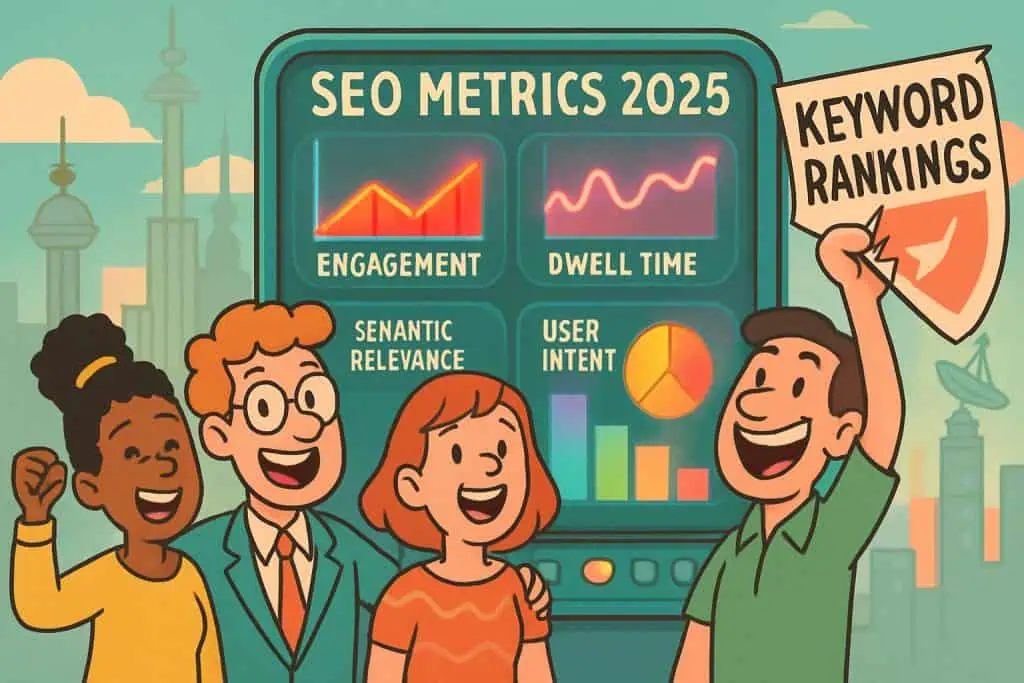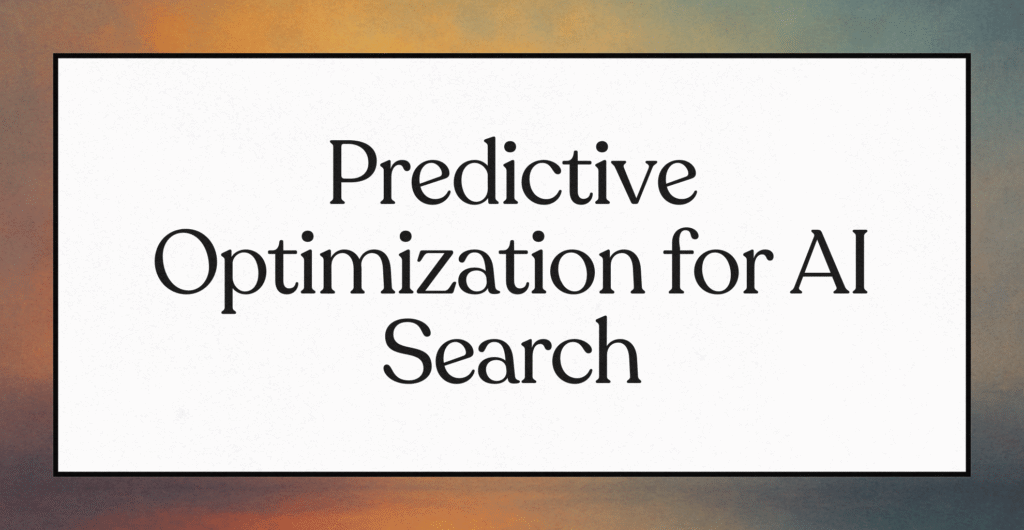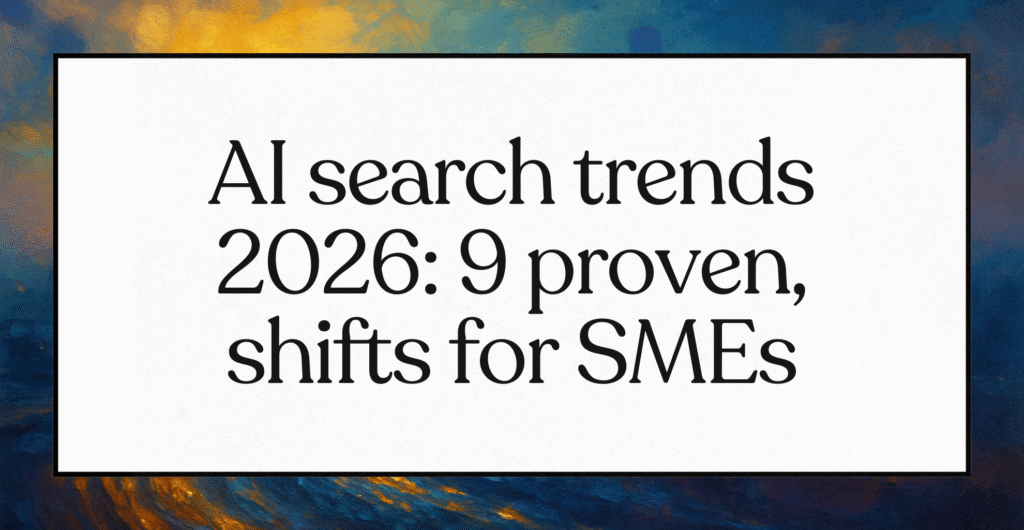Summary
SEO Metrics for 2025 have evolved beyond traditional KPIs, demanding a strategic focus on user intent, semantic relevance, and technical performance to achieve organic growth. Key performance indicators now include Core Web Vitals, advanced user engagement signals like dwell time, and visibility within SERP features, reflecting the influence of AI systems like RankBrain and BERT. To remain competitive, businesses must adopt real-time SEO dashboards and emerging strategies like Answer Engine Optimization (AEO) to align with modern search algorithms and user behavior.
In January 2025, a client came to us frustrated. They had invested heavily in content for months, yet their organic traffic stayed flat.
After examining their analytics, the problem became clear: they were still tied to outdated KPIs instead of the SEO Metrics 2025 that matter now. Once we rebuilt their reporting with a real-time dashboard and shifted focus to modern performance indicators, organic traffic climbed 47% in just three months.
This case makes one thing obvious: what worked in 2023 does not guarantee results anymore. With algorithms growing more complex and user behaviour shifting, tracking the right SEO Metrics 2025 is not optional—it’s the baseline for staying competitive.
How SEO Metrics 2025 Are Reshaping Search Strategy
The industry has moved far from its keyword-first origins. By 2025, search engines evaluate content in ways that blend semantics, behaviour signals, and technical precision. SEO Metrics 2025 reflect this new complexity.
In the early days, optimization meant keywords, backlinks, and traffic counts. Those signals still matter but only as part of a larger system. Today’s SEO Metrics 2025 extend to engagement, semantic accuracy, and site health. Algorithms no longer reward content that simply matches terms—they reward content that answers intent.
Google’s AI-powered systems, RankBrain and BERT, highlight this shift. RankBrain interprets meaning behind queries through machine learning, while BERT processes word context with far greater subtlety. Both directly influence the SEO Metrics 2025 marketers must track. Relevance, satisfaction, and contextual alignment now outweigh sheer keyword density.
Neil Patel points out that SEO has become strategic rather than purely operational. In practice, that means content must demonstrate authority and expertise, not just fill pages. Traditional metrics like keyword counts or backlink volume are incomplete. Success today requires aligning strategy with SEO Metrics 2025, where user intent, content trustworthiness, and technical readiness define outcomes.
Marketers who adjust measurement accordingly gain an edge. Those who don’t will keep chasing traffic without understanding why results stagnate.
Top SEO KPIs to Track in 2025
Visibility metrics remain foundational to SEO performance measurement, though their interpretation has evolved significantly. These metrics help you understand how discoverable your content is within search ecosystems.
1. Organic Traffic
Organic traffic remains a vital SEO KPI, representing visitors who find your site through unpaid search results. This metric directly reflects how effectively your SEO strategy attracts users seeking information about your products or services.
To track organic traffic :
- Use Google Search Console’s Performance report to view clicks, impressions, CTR, and average position
- Identify which pages generate the most traffic
- Analyze which keywords drive visitors to your site
Organic traffic has become more significant as zero-click searches become more prevalent. Zero-click searches refer to instances where the user’s query is answered on the search results page without needing to click through to a website. As reported by Sparktoro, this trend means that only about 36% of Google searches now result in clicks to the ‘open web.’ Understanding and adapting to this trend is crucial for your SEO strategy in 2025, as it affects how you measure and interpret organic traffic.
2. Keyword Rankings
Keyword ranking remains relevant in 2025, though its context has expanded beyond simple position tracking. Modern keyword ranking analysis should focus on the following:
- Position for primary transactional keywords
- Visibility for informational queries throughout the customer journey
- Ranking stability over time
- Mobile vs. desktop ranking disparities
Tools like Morningscore offer real-time tracking of keyword rankings, allowing marketers to observe changes rather than waiting for monthly reports.
3. Search Visibility
Search visibility measures your brand’s overall presence in search results for relevant queries. This metric helps you understand your competitive position in the Search and track improvement over time.
Modern search visibility metrics should account for the following:
- Featured snippets and knowledge panels
- Image and video carousels
- Local pack results
- Shopping Results
In 2025, user behaviour metrics have become increasingly vital as search engines prioritize content that satisfies user needs. These metrics are not just numbers on a dashboard but a reflection of how effectively your site delivers on search intent and, ultimately, user satisfaction.
4. Organic Click-Through Rate
CTR measures the percentage of impressions that result in clicks to your site. Low CTR may indicate misalignment between your title tags/meta descriptions and user expectations. In 2025, CTR analysis should consider:
- How AI-generated search summaries affect click behaviour
- Mobile vs. desktop differences
- SERP feature impacts on traditional result CTR
- Industry benchmarks for various query types
5. Engagement Metrics Beyond CTR
Traditional engagement metrics have evolved to provide deeper insights into user satisfaction:
- Dwell time: How long users spend on your page before returning to search results
- Scroll depth: How far users scroll through your content
- Interaction rates: How users engage with page elements like videos, calculators, or forms
These advanced engagement metrics offer a more comprehensive view of content quality than simple bounce rates or session durations.
6. Sub-Page Engagement
Sub-page engagement has emerged as a crucial SEO metric in 2025. It measures how users interact with specific page elements rather than overall page performance. This granular analysis helps identify which content components drive value and which may need optimization.
For example, measuring engagement with interactive elements, expandable sections, or multimedia content provides insights into content effectiveness that traditional page-level metrics miss.
Technical foundation metrics remain critical in 2025 as search engines prioritize websites offering superior technical performance.
7. Core Web Vitals
Core Web Vitals have become increasingly critical ranking factors, measuring loading performance, interactivity, and visual stability :
- Largest Contentful Paint (LCP): Loading performance
- First Input Delay (FID): Interactivity
- Cumulative Layout Shift (CLS): Visual stability
These metrics directly impact user experience and, consequently, search rankings. Tools like Google’s PageSpeed Insights provide detailed analysis and improvement recommendations.
8. Page Load Time
Page load time remains a critical SEO metric, with studies showing that pages loading in under 3 seconds have significantly lower bounce rates. According to research cited in the search results, 47% of consumers expect websites to load in 2 seconds or less, and 40% abandon sites taking more than 3 seconds to load.
9. Indexation Health
Monitoring indexation health helps ensure search engines can properly crawl and index your content:
- Index coverage ratio
- Crawl stats
- Core error types (404s, server errors)
- Indexation of new content
Regular assessment of indexation metrics helps identify technical issues before they impact Visibility and rankings.
Real-Time SEO Tracking and Dashboards for SMEs
CapstonAI Integration for Streamlined Monitoring
Small and medium enterprises often lack full SEO departments. That limitation makes automation critical. CapstonAI helps by handling monitoring tasks automatically, reducing manual work while keeping strategy aligned with SEO Metrics 2025. This means SMEs can focus on business growth instead of deciphering spreadsheets.
Real-time SEO tracking shifts the process away from static, monthly reports. The benefits are immediate:
- Algorithm update effects are spotted as they happen
- Technical problems affecting visibility surface faster
- Content can be optimized in response to live performance trends
- SEO efforts align better with current market behaviour
Agency Monitor stresses that live insights allow teams to act before problems escalate. For SMEs, that timeliness makes the difference between slow decline and fast recovery.
Building an Effective SEO Dashboard
For SMEs, the right dashboard combines simplicity with depth. A framework built around SEO Metrics 2025 ensures that even non-specialists can read the numbers and know what to do next.
Core components include:
- Traffic breakdown: sessions, users, and pageviews
- Channel comparison: organic, paid, referral, and direct
- Keyword performance with rank changes and visibility scores
- Content analysis to highlight top-performing assets
- Behaviour tracking: bounce rates, dwell time, and repeat visits
- Conversion data tying search performance to revenue or leads
The design should be adaptable. An e-commerce store may prioritize checkout funnel data, while a service business may focus on inbound leads. The dashboard must remain accessible to both marketing leads and executives, presenting SEO Metrics 2025 without jargon or unnecessary complexity.
Why SMEs Need This Approach
The shift toward real-time monitoring reflects how quickly search conditions evolve. SMEs that continue to rely on outdated reporting cycles risk missing key opportunities. By adopting dashboards aligned with SEO Metrics 2025, they secure faster responses, stronger adaptability, and clearer links between SEO investment and business growth.
Emerging SEO Trends in 2025
Answer Engine Optimization
Answer Engine Optimization (AEO) has emerged as a critical SEO component in 2025. AEO focuses on providing direct answers to user queries through generative AI chatbots, AI-generated search summaries, and voice search assistants.
Examples of answer engines include:
- Generative AI bots: ChatGPT, Gemini, Perplexity, Claude
- AI-powered voice assistants: Alexa, Siri, Google Assistant
AEO metrics to track include:
- Featured snippet capture rate
- Voice search appearance frequency
- AI summary inclusion metrics
- Zero-click search performance
SearchEngineLand notes that “brands should focus on what has always worked, especially over the last few years: digging into true user understanding and delivering content that anticipates and addresses their informational needs”.
Predictive Traffic Growth
SEO forecasting will become more sophisticated in 2025, allowing marketers to predict future performance more accurately. This predictive approach helps:
- Set realistic growth expectations
- Allocate resources more effectively
- Demonstrate potential SEO value to stakeholders
Modern SEO forecasting uses historical data combined with AI-powered analysis to estimate metrics like:
- Future organic search traffic
- Potential keyword ranking improvements
- Expected conversion rates
- Projected revenue from organic search
TrafficThinkTank emphasizes that forecasts don’t need to be exact-just directionally accurate enough to set appropriate expectations.
Semantic Relevance and Entity-Based SEO
Search engines increasingly rely on entities and structured data to understand content context and meaning. Metrics that assess semantic relevance have become central to SEO strategies in 2025:
- Content alignment with known entities
- Effective schema markup implementation
- Topic clustering effectiveness
- Entity relationship mapping
These metrics ensure that content is relevant to users and easily understood by search engines, improving Visibility in a more semantically sophisticated Search.
Advanced SEO Analytics Techniques
AI-Powered SEO Performance Indicators
AI has transformed SEO analytics by introducing predictive capabilities forecasting future performance trends. These tools analyze historical data and user behaviour to anticipate the following:
- Potential traffic increases
- Ranking improvements
- Audience growth opportunities
Predictive analytics allows marketers to adjust strategies proactively rather than reactively, maintaining competitive advantage in a dynamic environment.
Content Quality Assessment
Content quality metrics have evolved beyond basic word counts and keyword density. In 2025, the content quality assessment includes:
- Semantic depth analysis
- Expert content verification signals
- Authoritative source integration
- Content uniqueness measurements
Neil Patel’s research indicates that time allocation in content creation has shifted significantly. Research now accounts for 25% of the total process, a significant shift toward documented expertise rather than mere content production.
Building an Effective SEO Dashboard
Essential Components
An SEO dashboard in 2025 must track more than traffic. To stay useful, it should integrate the full range of SEO Metrics 2025, presenting them in a way that stakeholders can act on quickly. The foundation rests on five areas:
- Traffic performance with segmented views by channel and device
- Keyword tracking with an emphasis on rank shifts tied to intent
- Technical SEO indicators such as crawlability, speed, and index coverage
- User engagement metrics including dwell time and return visits
- Conversion tracking that links organic visibility to revenue or leads
Automated reporting platforms like Looker Studio remain central. They can pull live data, refresh automatically, and distribute recurring reports. The point is speed and clarity: numbers updated without manual pulls.
Customization for Different Business Goals
No single structure works for every site. An SEO Metrics 2025 framework adapts to context.
- E-commerce brands prioritize product keyword rankings, revenue attribution, and abandoned-cart recapture.
- B2B firms track form submissions, demo requests, and long-tail queries tied to expertise.
- Publishers monitor reader loyalty, average pages per session, and topic cluster visibility.
- Local businesses require location-based visibility, map pack appearances, and review sentiment.
Kodalogic’s note captures it: the dashboard must reflect the target audience, the products offered, and the scope of the SEO program—whether sitewide or landing-page focused.
The SEO Performance Measurement
The shift in SEO Metrics 2025 is toward context-rich interpretation. Old staples—traffic, backlinks, keyword positions—still matter, but only as part of a wider matrix. Today, measuring SEO means asking how well content satisfies search intent and how fast insights are translated into action.
For small and midsized businesses, tools like CapstonAI lower the barrier. Access once reserved for enterprise teams—AI scoring, predictive visibility tracking, and anomaly alerts—now comes in real time. That immediacy makes SEO Metrics 2025 not just descriptive but prescriptive, guiding daily tactics.
Search behaviour itself is expanding. Queries happen through voice, image, and multi-modal interfaces. Ranking well now requires monitoring engagement signals, SERP features, and cross-platform visibility. The most reliable SEO Metrics 2025 connect intent satisfaction with user experience—page load, accessibility, relevance, and retention.
Why This Measurement Framework Matters
The purpose of defining SEO Metrics 2025 is not to collect data but to clarify performance against business goals. A company with strong traffic but weak conversions signals a gap in content alignment. A site with high engagement but poor technical health risks losing momentum. The framework aligns marketers with decision-makers, translating search signals into bottom-line value.
Digital teams that implement these dashboards correctly can adapt to shifts in algorithms and user behaviour faster. The metrics serve less as a scorecard and more as a feedback loop.
Adopting SEO Metrics 2025 means treating measurement as an evolving process. Metrics should be reviewed, tested, and re-weighted regularly. By grounding SEO in a flexible but structured measurement framework, businesses stay prepared for shifts in technology and search behaviour while keeping user satisfaction at the centre.
Additional sources
- https://trafficthinktank.com/seo-kpis/
- https://www.tactee.fr/seo/kpi-seo/
- https://searchengineland.com/evolving-seo-for-2025-what-needs-to-change-450911
- https://agencymonitor.io/features/seo-monitoring-dashboard/
- https://trafficthinktank.com/seo-forecasting/
- https://ecampusontario.pressbooks.pub/capstoneresources/chapter/dashboards/
- https://nogood.io/2024/11/05/answer-engine-optimization/
- https://www.workshopdigital.com/blog/engagement-metrics-for-seo/
- https://www.digidop.com/blog/seo-trends-2025-20-stats
- https://morningscore.io/seo-dashboard/
- https://www.kodalogic.com/blog/automated-seo-reports-with-looker-studio-dashboard
- https://digitalmarketinginstitute.com/blog/12-of-the-most-important-seo-statistics-to-know
- https://www.octoboard.com/seo-reporting-tool/ga4-automated-reports/seo-dashboard-ga4-content-overview
- https://improvado.io/blog/seo-dashboard-in-google-data-studio
- https://searchengineland.com/benchmark-seo-performance-2025-450806
- https://seocrawl.com/en/seo-dashboard/
- https://entail.ai/resources/seo/seo-kpis
- https://explodingtopics.com/blog/future-of-seo
- https://www.seoreseller.com/features/seo-dashboard/
- https://wordlift.io/blog/en/seo-kpis-in-2025/
- https://backlinko.com/seo-this-year
Q&A
1. Why are traditional SEO metrics like keyword counts outdated in 2025?
Traditional metrics are outdated because modern search engines use AI to understand context and user intent. Success in 2025 depends on semantic relevance, content quality, and a positive user experience, not just matching keywords.
2. What are the most important SEO KPIs to track in 2025?
The most important SEO KPIs include organic traffic, search visibility across SERP features (like snippets and carousels), Core Web Vitals (LCP, FID, CLS), and user engagement metrics like organic click-through rate (CTR) and dwell time.
3. What is Answer Engine Optimization (AEO)?
Answer Engine Optimization (AEO) is the process of optimizing content to provide direct answers for generative AI chatbots, voice assistants, and AI-powered search summaries. It’s a critical strategy for capturing visibility in a landscape with increasing zero-click searches.
4. How do real-time SEO dashboards benefit small and medium enterprises (SMEs)?
Real-time SEO dashboards help SMEs respond quickly to algorithm changes and technical issues without needing a large SEO department. They provide immediate insights into performance, allowing for faster strategy adjustments and a clearer connection between SEO investment and business growth.











